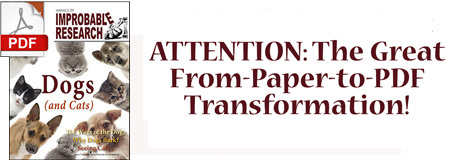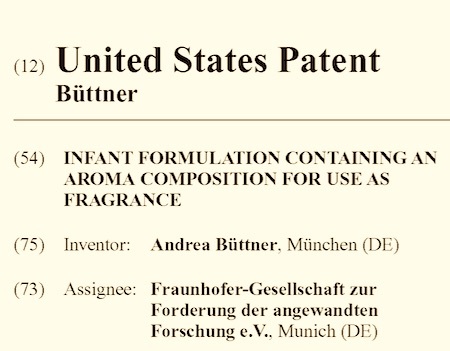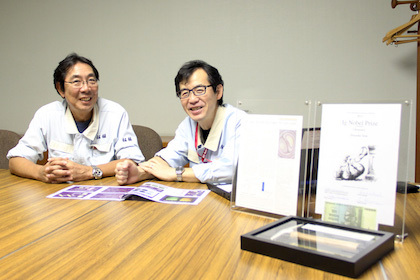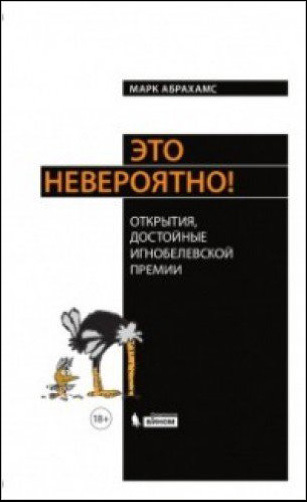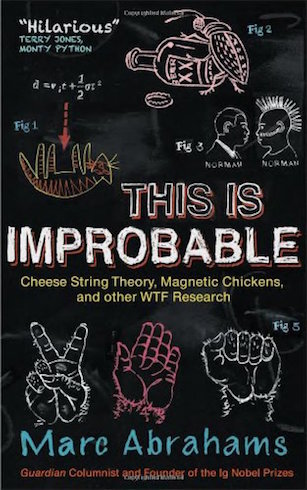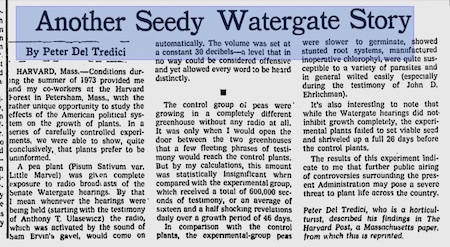Marc Abrahams's Blog, page 299
October 29, 2015
fMRI and meaningless lower-face acts
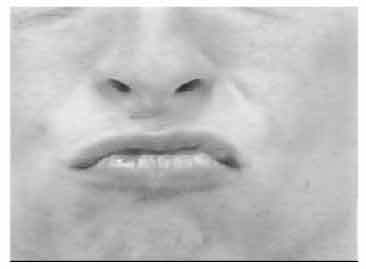 Improbable can find but one formal scientific study which features investigations of fMRI monitored responses to meaningless lower-face acts (a.k.a. ‘gurns’). Experiments carried out in year 2000, under the protocols of the UK’s Bethlem Royal and Maudsley Hospital Research Ethics Committee, were designed to answer the question: ‘Can the cortical substrates for speechreading be distinguished from similar – but non-speech – face actions?’ The research, in which participants undergoing fMRI viewed stimuli of people speaking or gurning [see photo], showed that there can indeed be differences.
Improbable can find but one formal scientific study which features investigations of fMRI monitored responses to meaningless lower-face acts (a.k.a. ‘gurns’). Experiments carried out in year 2000, under the protocols of the UK’s Bethlem Royal and Maudsley Hospital Research Ethics Committee, were designed to answer the question: ‘Can the cortical substrates for speechreading be distinguished from similar – but non-speech – face actions?’ The research, in which participants undergoing fMRI viewed stimuli of people speaking or gurning [see photo], showed that there can indeed be differences.
“Those areas activated more by observing gurning than speaking faces included [the] middle occipital gyri, middle temporal gyri, [and] fusiform gyri.”
See: “Cortical substrates for the perception of face actions: an fMRI study of the specificity of activation for seen speech and for meaningless lower-face acts (gurning)” by Ruth Campbell, Mairead MacSweeney, Simon Surguladze, Gemma Calvert, Philip McGuire, John Suckling, Michael John Brammer, and Anthony S. David, in: Cognitive Brain Research, 12, (2001) pp. 233–243.
Bonus Question [optional] ‘Are gurns always meaningless?’
BONUS: Intentional gurning may be a different kind of activity. Some people celebrate it. Here’s video of a British gurning competition:

October 28, 2015
Improbable Research is converting from paper to PDFs
After 21 years, our magazine — Annals of Improbable Research — is abandoning paper. All issues of the magazine henceforth will be published in PDF form.
Introductory NEW SUBSCRIPTION price: $15/year .
This special price is available, worldwide, ONLY UNTIL OCTOBER 31, 2015.
After October 31, new subscriptions will be $25/year.
Please spread the word!
The November/December 2015 issue (vol. 21, no. 6) will be the final issue we also publish on paper.
SUBSCRIBE (or buy back-issues)
(PERPLEXED about how to subscribe? THIS may help.)
UPDATE (fun commentary, in Gizmodo): “Fantastically Nerdy Science Humor Magazine Goes Digital“

Human-Milk-Smell Perfume, for the Benefit of Babies
 What might be done to encourage babies to accept products which don’t naturally smell of human milk?
What might be done to encourage babies to accept products which don’t naturally smell of human milk?
“[…] babies prefer the odor attributes of human milk compared to those of artificial infant formula or milk products based on milk compositions of animal origin such as cow’s milk etc.”
The Fraunhofer Society (owner, amongst much more, of the mp3 patent) have come up with an idea – perhaps such things could be perfumed with human-milk smells? They have recently devised analytic techniques that have been able to identify more than forty characteristic odorants in human milk [see partial list below the fold] and now (as of 27th Oct 2015) the society was granted US patent #9167838 for their ‘Infant formulation containing an aroma composition for use as fragrance’.
Since the odorants, or perfumes, have been identified, they can be applied to (or added to) various items and products, so that human babies will more readily accept them.
“The scenting might be added during the production process or after manufacture. The object may be impregnated or a composition may be applied which comprises at least one of the above mentioned odorants.”
Items include pacifiers, sucking devices in general, clothing, incubators, medical equipment, pillows and toys. The patent says that the perfumes can also be added to ‘nutraceutical’ infant formulas.
Question: Might the new additives also be added to existing milks (cow, ewe, goat, horse, donkey, lama, camel or soya) to make them more appetizing for babies?
Bonus: A tangentially related study, from investigators at the California Polytechnic University, Department of Kinesiology, College of Math and Sciences, US, ‘What are mothers doing while bottle-feeding their infants? Exploring the prevalence of maternal distraction during bottle-feeding interactions’.
“Mothers reported engaging in other activities during 52% of feedings; television watching was the most prevalent activity reported.”
“LIST 1
Methylpropanal, butan-2,3-dione (diacetyl), hexanal, 1-hexen-3-one, octanal, 1-octen-3one, (Z)-1,5-octadien-3-one, nonanal, non-1-en-3-one, (E)-2-octenal, acetic acid, 3-methylthio propanal (methional), decanal, (Z)-non-2-enal, 3-isobutyl-2-methoxypyrazine, (E)-non-2-enal, linalool, (E,Z)-nona-2,6-dienal, (E,E)-octa-2,4-dienal, butanoic acid, phenylacetaldehyde, 2/3-methylbutanoic acid, (E,E)-nona 2,4-dienal, pentanoic acid, (E,E)deca-2,4-dienal, 2-methoxyphenol (guaiacol), 2-phenylethanol, .beta.-ionone, tr-(4,5)-epoxy(E)-dec-2-enal, 4-hydroxy-2,5-dimethyl-3(2H)-furanone, .gamma.-nonalactone, .gamma.-decalactone, 4-ethyloctanoic acid, .delta.-decalactone, 3-hydroxy-4,5-dimethyl-2(5H)-furanone (sotolon), 2-aminoacetophenone, (Z)-6-.gamma.-dodecenolactone, .delta.-dodecalactone, 3-methylindole (skatol), phenylacetic acid, vanillin, 5.alpha.-androst-16-en-3.alpha.-one, 4,16-androstadien-3-one, 1,4-androstadien-3,17-dion LIST 2 1-hexen-3-one, (Z)-1,5-octadien-3-one, non-1-en-3-one, (E)-2-octenal, decanal, (Z)-non-2-enal, 3-isobutyl-2-methoxypyrazine, (E)-non-2-enal, linalool, (E,Z)-nona-2,6-dienal, (E,E)-octa-2,4-dienal, phenylacetaldehyde, 2/3-methylbutanoic acid, (E,E)-nona-2,4-dienal, 2-methoxyphenol (guaiacol), 2-phenylethanol, .beta.-ionone, tr-(4,5)-epoxy-(E)-dec-2-enal, .gamma.-nonalactone, .gamma.-decalactone, 4-ethyloctanoic acid, .delta.-decalactone, 3-hydroxy-4,5-dimethyl-2(5H)-furanone (sotolon), 2-aminoacetophenone, (Z)-6-.gamma.-dodecenolactone, .delta.-dodecalactone, 3-methylindole (skatol), phenylacetic acid, 5.alpha.-androst-16-en-3.alpha.-one LIST 3 Methylpropanal, butan-2,3-dione (diacetyl), 1-hexen-3-one, (Z)-1,5-octadien-3-one, non-1-en-3-one, 3-methylthio propanal (methional), 3-isobutyl-2-methoxypyrazine, linalool, (E,E)-octa-2,4-dienal, butanoic acid, phenylacetaldehyde, 2/3-methylbutanoic acid, pentanoic acid, 2-methoxyphenol (guaiacol), 2-phenylethanol, .beta.-ionone, tr-(4,5)-epoxy-(E)-dec-2-enal, .gamma.-nonalactone, 4-ethyloctanoic acid, .delta.-decalactone, 3-hydroxy-4,5-dimethyl-2(5H)-furanone (sotolon), 2-aminoacetophenone, (Z)-6-.gamma.-dodecenolactone, 3-methylindole (skatol), phenylacetic acid, vanillin, 5.alpha.-androst-16-en-3.alpha.-one LIST 4 Butan-2,3-dione (diacetyl), 1-hexen-3-one, 1-octen-3-one, (Z)-1,5-octadien-3-one, non-1-en-3-one, phenylacetaldehyde, (E,E)-deca-2,4-dienal, .beta.-ionone, tr-(4,5)-epoxy-(E)-dec-2-enal, .gamma.-nonalactone, .gamma.-decalactone, 4-ethyloctanoic acid, .delta.-decalactone, 3-hydroxy-4,5-dimethyl-2(5H)-furanone (sotolon), 2-aminoacetophenone, (Z)-6-.gamma.-dodecenolactone, 6-dodecalactone, 3-methylindole (skatol), phenylacetic acid, 5.alpha.-androst-16-en-3.alpha.-one, .delta.4,16-androstadien-3-one, 1,4-androstadien-3,17-dion LIST 5 Hexanoic acid, heptanoic acid, octanoic acid, nonanoic acid, decanoic acid, dodecanoic acid, 3-methyl-2-hexenoic acid, .delta.-octalactone, .gamma.-octalactone, .delta.-nonalactone, .gamma.-dodecalactone, .delta.4,16-androstadien-3-one, 1,4-androstadien-3,17-dione, (Z)-4-heptenal, ethyl isobutanoate, ethyl butanoate, ethyl 2-methyl butanoate, ethyl 3-methylbutanoate, ethyl hexanoate, ethyl octanoate.”

Interview with the tearless-onion inventors
Tech Notes interviewed the Ig Nobel Prize-winning tearless-onion inventors. The interview is in Japanese. Here’s the beginning of it, auto-translated into English:
Ig Nobel Prize interview Laugh and Think [2nd]. If you turn off the onion really reason for tears – discovered from where there is no doubt: House Foods Group Inc. Mr. Imai
Ig Nobel Prize, which is given to the “performance for his thought-provoking laugh people” (Awards makes people Laugh and then Think). This time, was published in the British scientific journal Nature in 2002 “onion tear factor producing enzyme (Lachrymatory Factor Synthase: LFS) discovered” in achievements, in 2013 the award has been House Foods Group Inc. Central Research the Prize in Chemistry. I’ve interviewed talk to Imai Shinsuke Mr. Tokoro fundamental technology development department research Senior Doctorate (Agriculture).
– If you turn off the onion because tears Dell, you seem like a fact Needless to say?
Imai Shinsuke Mr. (or less, Mr. Imai): winning reason “biochemical process that onion cry the people, that it is more complex than scientists had thought, that it revealed” was. As you mention, anyone If you turn off the onion tears coming out it is that knows, the compounds of the factors that shed tears (tear factor) is also in the 1970s had been identified.
But, in fact, the presence of the essential enzyme in the production of this tear factor had been missed . We will notice the presence of this enzyme, tear factor synthase (Lachrymatory Factor Synthase: LFS below, LFS) was named.
LFS is one of the proteins contained a lot to extract of onion. Itself that the Purification of the LFS to confirm the properties, was not difficult. The reason for this study has been noted, to whom one mechanism of generation of tear factor that was not suspicious, why to question, whether I noticed the presence of the LFS? It is a place called. However, even I myself, and mean was going to find the LFS from the beginning, did not….

Podcast #35: The Psychoanalysts’ Nose, and Hair in Funny Places
The noses of famous psychoanalysts, the restoration of lost beards, the medical hazards of bits of hair that get into ears and throats, more of those clever contraptions to trap crooks, and a doctor’s discovery that pathology is and is not just like bird-watching — all these all turn up in this week’s Improbable Research podcast.
LISTEN TO IT! …or click on the “Venetian blinds” icon — at the lower right corner here — to select whichever week’s episode you want to hear:
SUBSCRIBE on Play.it, iTunes, or Spotify to get a new episode every week, free.
This week, Marc Abrahams tells about:
The Psychoanalysts’ Nose. (“The Psychoanalysts’ Nose— Sigmund Freud, Wilhelm Fliess, and Emma Eckstein: Three Nasal Narratives at the Origins of Psychoanalysis,” Annick Le Guerer, Psychoanalytic Review, vol. 88, no. 3, June 2001, 401–53.
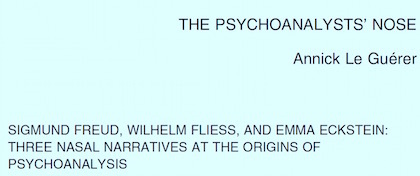 Featuring dramatic readings by Jean Berko Gleason
.
) Here’s video of Le Guerer: .
Featuring dramatic readings by Jean Berko Gleason
.
) Here’s video of Le Guerer: .Beard Restoration. (“Beard Restoration Using a Free Puboinguinal Hair-Bearing Flap,” K. Sasaki, M. Nozaki, and J. Katahira, Journal of Reconstructive Microsurgery, vol. 14, no. 7, October 1998, pp. 445-8. Featuring dramatic readings by Daniel Rosenberg.)
Discomforting hair in funny places. (“Facial fuzz and funny findings — Facial hair causing otalgia and oropharyngeal pain,” Francis A. Papay, Howard L. Levine, and William A. Schiavone, Cleveland Clinic Journal of Medicine, vol. 56, no. 3, 1989, pp. 273-276. Featuring dramatic readings by Sue Wellington.)
Yet a few more clever contraptions to capture crooks. (Mike Hall’s “Drive-up Teller Window Protection Apparatus” (U.S. patent 3956997, granted 1976) / Louis J. Marcone’s “Dog-tracking Scent Dispensing System for Apprehending Burglars and the Like” (U.S. patent 4867076, granted 1989); here’s a drawing from Marcone’s patent:  / Philip David Jones, Alan Hickling, and Ruth Marjorie Hickling’s “Soft Restraining System” (U.S. patent application 20050240132, G.B. patent application 211771). Featuring dramatic readings by Richard Baguley.)
/ Philip David Jones, Alan Hickling, and Ruth Marjorie Hickling’s “Soft Restraining System” (U.S. patent application 20050240132, G.B. patent application 211771). Featuring dramatic readings by Richard Baguley.)
Pathology and birdwatching, compared. (“Pathology and Birdwatching,” Chhanda Bewtra, American Journal of Dermatopathology, August 2003, Volume 25, Issue 4, p 357. Featuring dramatic readings by Sue Wellington.)
The mysterious John Schedler or the shadowy Bruce Petschek perhaps did the sound engineering this week.
The Improbable Research podcast is all about research that makes people LAUGH, then THINK — real research, about anything and everything, from everywhere —research that may be good or bad, important or trivial, valuable or worthless. CBS distributes it, on the CBS Play.it web site, and on iTunes and Spotify).

October 27, 2015
Russian edition of the book This Is Improbable
All Russia, or perhaps only parts of Russia, is or are celebrating the newly published Russian edition of the book This Is Improbable. The ISBN for the Russian edition is 9785996316281, a number that some, or perhaps all Russian mathematicians find fascinating. Here’s what the front cover looks like:
The American edition of the book has ISBN 9781851689316, a number that may itself be fascinating. Certainly it is lengthy, if measured in digits, and if your threshold for lengthiness is about ten.
The American edition is encrusted with hearty blurbs from non-Russians:
“After reading this hilarious book, you’ll never look at scientists in the same way again.”
—Terry Jones, bestselling author and Python
“Wonderful! The definitive compendium of quirky, jaw-dropping research”
—Richard Wiseman, author of :59 seconds
“Delightful… a pleasure to read in the bathroom and in the bedroom, and the kind of book that makes you seem smarter when you share it with friends (just make sure you wash your hands first).”
—Dan Ariely, author of Predictably Irrational
“Marc Abrahams is a perfectly calibrated filtration system into which all of science is poured and out of which comes pure, giddy goofball delight. This book is a delicious, addictive treat.”
—Mary Roach, author of Stiff and Packing for Mars
The Russian edition is unencrusted.

The ‘Usefulness of Uselessness’ and a vice versa update
 It was somewhere around the 4th century BC that Chinese philosopher Zhuang Zhou raised the idea of ‘The Usefulness of Uselessness’. Master Zhuang pointed out that objects (or information) which appear at first sight to be quite useless, can, on further investigation (and/or at a later date, and/or at another place) sometimes turn out to be quite useful. Over the last 2.5 millennia or so, many other scholars have turned their attention to ‘The Usefulness of Uselessness’ – generating in the process a flurry, or perhaps even a plethora of academic treatises on the concept. (examples: [1] [2] [3] [&etc] )
It was somewhere around the 4th century BC that Chinese philosopher Zhuang Zhou raised the idea of ‘The Usefulness of Uselessness’. Master Zhuang pointed out that objects (or information) which appear at first sight to be quite useless, can, on further investigation (and/or at a later date, and/or at another place) sometimes turn out to be quite useful. Over the last 2.5 millennia or so, many other scholars have turned their attention to ‘The Usefulness of Uselessness’ – generating in the process a flurry, or perhaps even a plethora of academic treatises on the concept. (examples: [1] [2] [3] [&etc] )
And recently the concept has been further extended, from a research perspective, to not only include ‘The Usefulness of Uselessness Research’ but also the ‘Uselessness of Useful Research’. May we recommend this 2014 paper from Mark Learmonth, Andy Lockett and Kevin Dowd, (Durham University, UK) ‘Promoting scholarship that matters: the uselessness of useful research and the usefulness of useless research’, in: British journal of management, 23 (1). pp. 35-44. A full copy of which may be found here.
Also see: Useless, useful and you and Other looks at the usefulness of useless knowledge.

Effects of the Watergate hearings on the growth of pea plants
It’s always a good time to take another look at Peter Del Tredici‘s experiment: the effects of the Wategate hearings on the growth of pea plants:

October 26, 2015
Did the Explorers Club Eat Frozen Mammoth in 1951?
Did they (they!) serve frozen mammoth to the Explorers Club on that famous evening in 1951? A new study, to be presented next week, claims to have the answer. And that answer is: Nay, nay, it was green turtle.
The study is:
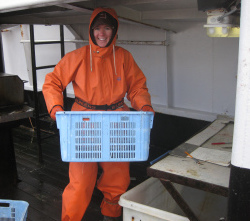 “Was Frozen Mammoth or Giant Ground Sloth Served for Dinner at the Explorers Club?” Matt Davis, Jessica R. Glass [pictured here], Timothy J. Walsh, Eric J. Sargis, and Adalgisa Caccone, 2015 GSA Annual Meeting in Baltimore, Maryland, USA (1-4 November 2015), Paper No. 327-16. (Thanks to Casey Burns for bringing this to our attention.) The authors, at Yale University, report:
“Was Frozen Mammoth or Giant Ground Sloth Served for Dinner at the Explorers Club?” Matt Davis, Jessica R. Glass [pictured here], Timothy J. Walsh, Eric J. Sargis, and Adalgisa Caccone, 2015 GSA Annual Meeting in Baltimore, Maryland, USA (1-4 November 2015), Paper No. 327-16. (Thanks to Casey Burns for bringing this to our attention.) The authors, at Yale University, report:
Accounts of woolly mammoths (Mammuthus primigenius) preserved so well in ice that their meat is still edible have a long history of intriguing the public and influencing paleontological thought on Quaternary extinctions and climate, with some scientists resorting to catastrophism to explain the instantaneous freezing necessary to preserve edible meat. In one famous case that is often regarded as true, members of The Explorers Club purportedly dined on a frozen mammoth collected by notable polar explorers in Alaska, USA in 1951. This event, well received by the press and general public, became an enduring legend for the Club and started the notorious annual tradition of serving rare and exotic food at Club dinners that continues to this day. The Yale Peabody Museum holds a sample of meat preserved from the 1951 meal, interestingly labeled not as a mammoth but as a South American giant ground sloth (Megatherium). We sequenced a fragment of the mitochondrial cytochrome-b gene and studied archival material to verify its identity, which if genuine, would extend the range of Megatherium over 600% and alter our views on ground sloth evolution. Numerous historical reports do corroborate the identification of the meat as sloth. However, our results indicate that the meat was not mammoth or Megatherium but surprisingly, green sea turtle (Chelonia mydas). The prehistoric feast was likely an elaborate publicity stunt that gained legendary status over time. Our study emphasizes the value of museums collecting and curating voucher specimens, particularly those used to substantiate extraordinary claims.

Atlantic profile of Ig Nobel winner Oppenheimer and murky academic writing
 “The Needless Complexity of Academic Writing” sings a headline in The Atlantic magazine. The article beneath the headline, by Victoria Clayton-Alexander, is profiles Ig Nobel Prize winner Danny Oppenheimer [pictured here] and others who fight muddle and murk. The article says, in part:
“The Needless Complexity of Academic Writing” sings a headline in The Atlantic magazine. The article beneath the headline, by Victoria Clayton-Alexander, is profiles Ig Nobel Prize winner Danny Oppenheimer [pictured here] and others who fight muddle and murk. The article says, in part:
(Oppenheimer for his part believes he got the award because of the paper’s title: “Consequences of Erudite Vernacular Utilized Irrespective of Necessity: Problems with Using Long Words Needlessly.” The title made readers laugh, he told me—and then think.) Ultimately, Oppenheimer says the attention the Ig Nobel brought to his research means it’s now being used to improve the work of students in academic writing centers around the country.
Oppenheimer was awarded the 2006 Ig Nobel Prize for literature.
 The Atlantic article also cites related work by psychologist Steven Pinker, who is also well known for being the charter member of the Luxuriant Flowing Hair Club for Scientists (LFHCfS).
The Atlantic article also cites related work by psychologist Steven Pinker, who is also well known for being the charter member of the Luxuriant Flowing Hair Club for Scientists (LFHCfS).

Marc Abrahams's Blog
- Marc Abrahams's profile
- 14 followers


